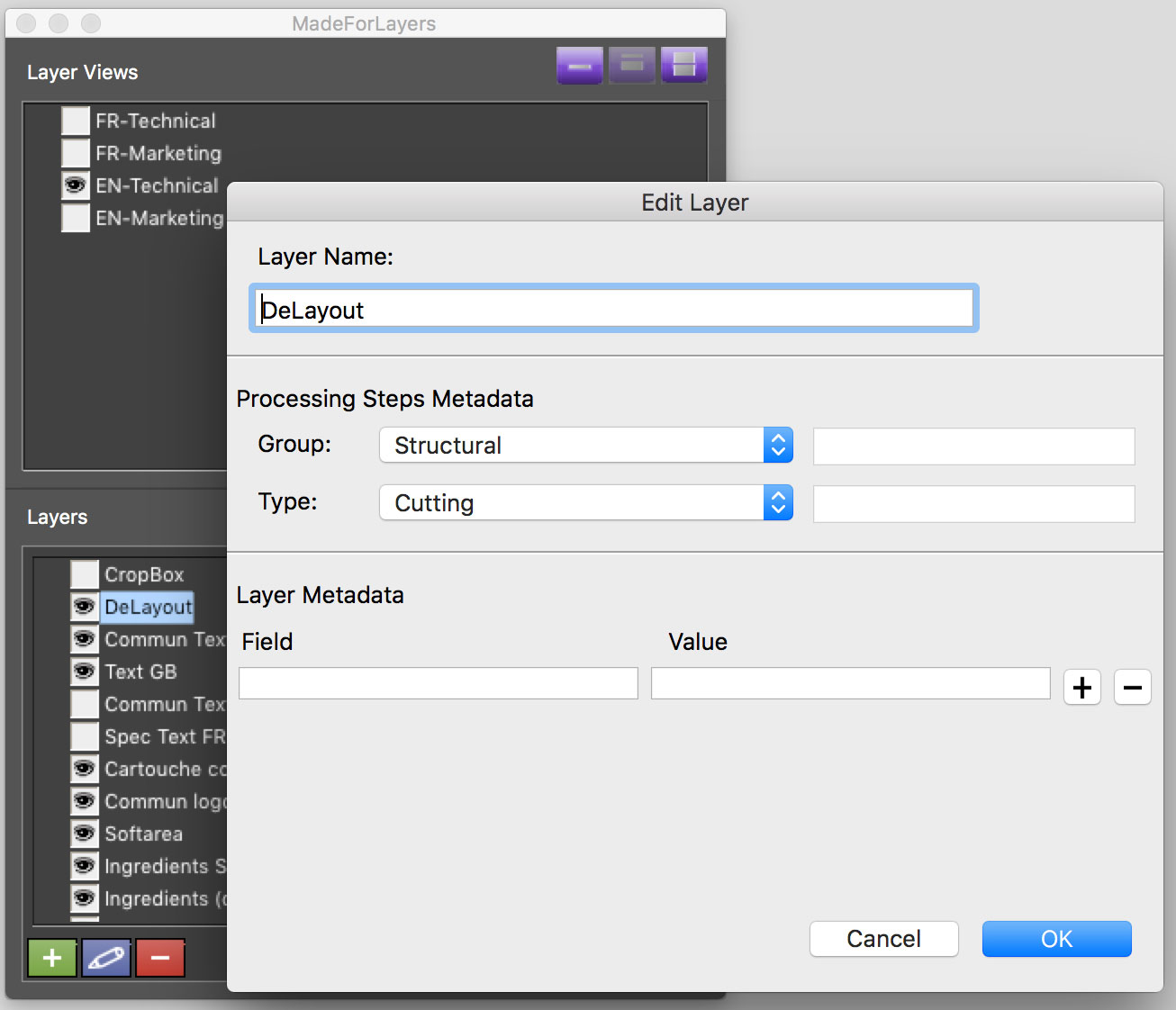axaio software, developer of solutions for PDF creation, printing and content correction workflows for the publishing and printing markets, announces the availability of MadeForLayers and MadeToPrint for Adobes newest InDesign version CC 2018. Furthermore, both products are supporting processing steps metadata for a standardized layer operation in the new version. The Server version of MadeToPrint was updated by a new user interface.
axaio MadeForLayers is a plug-in for InDesign and Illustrator that helps streamlining and simplifying the creation and editing of complex documents. It reduces human errors while working with layer-heavy documents and therefore saves design time. Different layers can be combined into layer views, showing different language or regional variants of a document with one click.
When using MadeForLayers as a free part of MadeToPrint, the different layer views can automatically be printed or exported to PDF, instantly creating faultless output for all different language or regional versions.
What's new?
MadeForLayers was extended by the support of additional metadata, called 'processing steps'. The new option is also accessible through the layer handling in MadeToPrint:
InDesign layers can now have both regular meta data and processing steps metadata attached to them. This creates the possibility to add standardised terms to each layer to help identify the layer in subsequent processing steps in the workflow. Examples include easily identifying the dieline, varnish objects or braille in a document. The standardisation is based on the upcoming ISO standard 19593, which defines the use of PDF to associate processing steps and content data. The processing steps metadata is filled out for each layer using the MadeForLayers panel and is then retained in the layout application. Using MadeToPrint the metadata is transfered automatically into the PDF for output export.
Screenshot of MadeForLayers
For MadeToPrint Server, there is a new user interface, for an easier set-up of the MadeToPrint Server configuration. The old user interface, which was based on Adobe AIR and Flash Player, has been replaced by a native application. This makes it more stable and performant, and paves the way for flexible further development based on customer needs.
www.axaio.com
